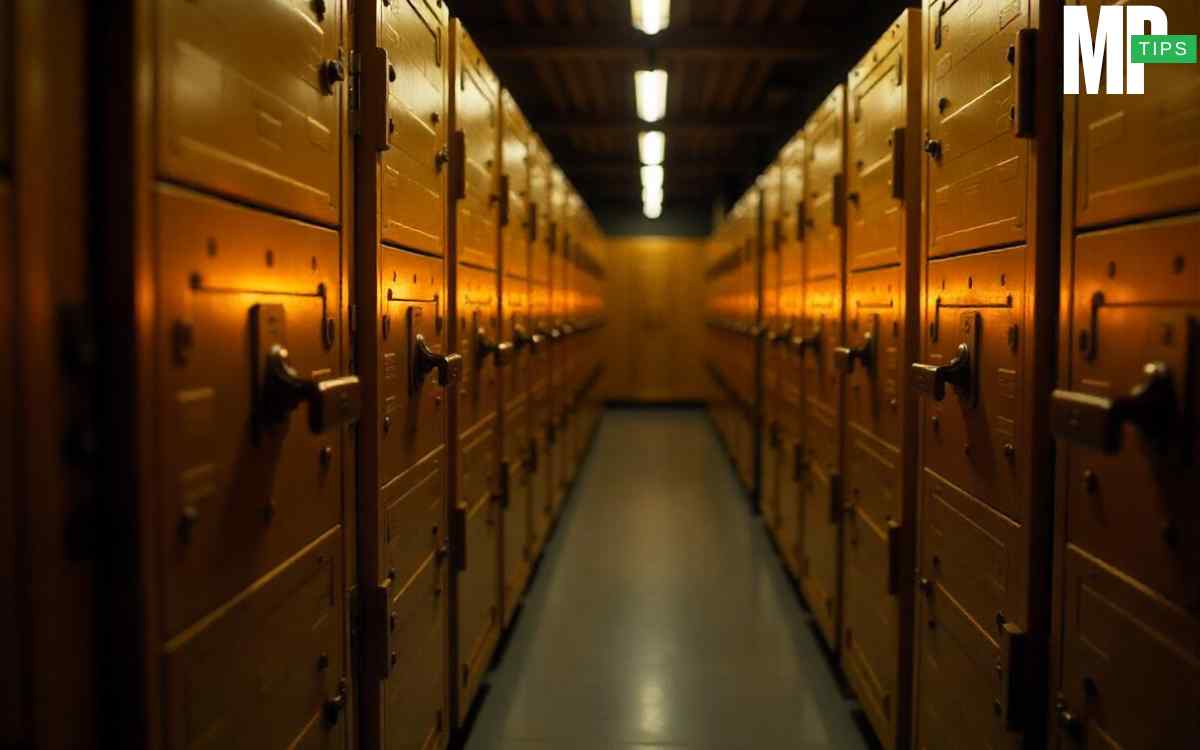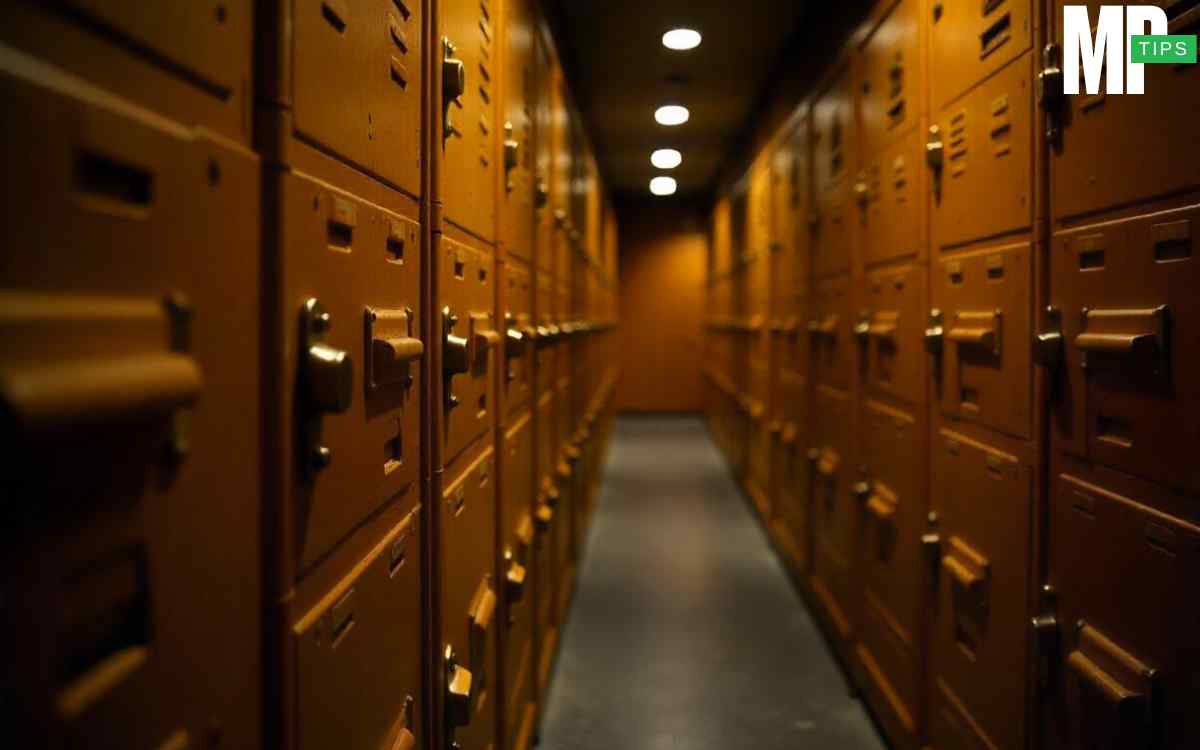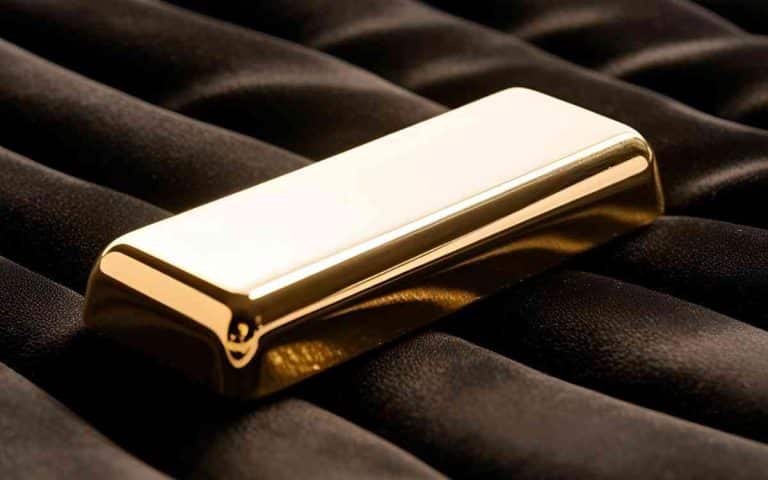Should You Keep Your Gold in a Bank Locker? Pros & Cons
Yes, storing gold in a bank locker offers security from theft, but it comes with annual fees and limited access hours.
Gold has always been more than just a shiny metal. For centuries, it has been a symbol of wealth, security, and legacy.
Whether it’s passed down through generations as heirloom jewelry or accumulated as an investment, gold holds emotional and financial significance.
But one pressing question remains—where should you keep your gold to ensure its safety? Is a bank locker the best option, or are there better alternatives?
This article will explore the pros and cons of keeping your gold in a bank locker, helping you make an informed decision.
Contents
- 1 Key Takeaways
- 2 Gold Bank Locker Charges (Annual Fees, Approximate – 2030)
- 3 Introduction
- 4 What is a Bank Locker?
- 5 Pros of Keeping Gold in a Bank Locker
- 6 Cons of Keeping Gold in a Bank Locker
- 7 No Absolute Safety Guarantee
- 8 Complicated Documentation Process
- 9 Home Storage vs. Bank Locker: A Comparative Analysis
- 10 Factors to Consider Before Deciding
- 11 Hybrid Approach: Best of Both Worlds
- 12 Author
Key Takeaways
Gold Bank Locker Charges (Annual Fees, Approximate – 2030)
| Country | Small Locker | Medium Locker | Large Locker | Notes |
|---|---|---|---|---|
| India | $20 – $40 | $40 – $100 | $100 – $150 | Charges vary by bank (e.g., SBI, HDFC, ICICI) |
| USA | $40 – $60 | $60 – $120 | $120 – $250 | Rates vary by state and bank (e.g., Bank of America) |
| UK | $50 – $90 | $90 – $150 | $150 – $300 | Offered by banks and private vaults |
| UAE (Dubai) | $80 – $100 | $120 – $180 | $200 – $400 | Offered by Emirates NBD, Mashreq, etc. |
| Australia | $60 – $80 | $100 – $180 | $200 – $350 | Available in major cities only |
| Singapore | $70 – $120 | $120 – $200 | $200 – $400 | Offered by DBS, UOB, and private vault services |

Introduction
Importance of Gold as an Asset
Gold isn’t just a precious metal; it’s an emotional anchor in many households.
From wedding gifts to emergency funds, it’s considered a “safe-haven” asset, especially during financial turmoil.
Economies may fluctuate, currencies may devalue, but gold retains its intrinsic value, often moving inversely to the stock market. This makes it a go-to investment in uncertain times.
Rising Concerns Over Gold Storage
With its growing value, safeguarding gold becomes a priority. People fear theft, damage, and even legal complications if gold is not stored securely.
The traditional home safe is no longer considered foolproof, prompting many to look towards banks and their locker facilities.
But is this solution as secure and practical as it sounds? Or does it come with its own set of challenges?
What is a Bank Locker?
Definition and Purpose
A bank locker is a secure storage compartment provided by financial institutions for customers to store valuable items like gold, documents, and jewelry.
Think of it as your personal vault within a bank’s fortified infrastructure.
These lockers are designed to offer high-end security, shielding valuables from theft, loss, or damage.

How Bank Lockers Work
The process is straightforward but regulated. You approach a bank, fulfill KYC (Know Your Customer) norms, and rent a locker based on your requirements.
Lockers come in different sizes—small, medium, large—with corresponding fees.
Access is granted through a dual-key system where both the bank and the customer hold keys, ensuring no unauthorized entry.
However, usage is restricted to banking hours, which might be a limitation for some.
Banks also offer insurance coverage, but it often comes with specific terms and caps. It’s crucial to understand these nuances before deciding.
Pros of Keeping Gold in a Bank Locker
Enhanced Security Against Theft
One of the biggest draws of a bank locker is its superior security framework.
Most banks invest heavily in high-tech surveillance systems, alarm mechanisms, and reinforced vaults.
Compared to a home safe, which can be vulnerable to burglaries, bank lockers are generally considered far more secure.
Multi-layered security involves biometric access, 24/7 CCTV monitoring, and even motion detectors.
This significantly reduces the risk of theft. While no system is infallible, the deterrent factor is much higher in a bank setting than at home.
Another advantage is anonymity. Unlike showcasing a large safe at home, which could attract unwanted attention, a bank locker keeps your gold discreet and out of sight.
Insurance Benefits
Bank lockers often come with an option for insurance coverage, providing financial protection in case of theft, fire, or other unforeseen events.
Some banks include basic coverage, while others offer optional add-ons for higher protection limits.
It’s essential to read the fine print, as insurance policies might cover only specific incidents and have upper limits on claim amounts.
However, even partial insurance is better than none, giving peace of mind to gold owners.
Banks are also legally required to follow RBI (Reserve Bank of India) guidelines, which further enhance the accountability of these services.
Cons of Keeping Gold in a Bank Locker
Accessibility Issues
One of the major drawbacks of bank lockers is restricted access.
Unlike a home safe, where you can retrieve your valuables anytime, bank lockers are only accessible during working hours.
Need your jewelry for a sudden function on a Sunday? Tough luck if the bank is closed.
In emergencies, this limited accessibility can be a significant hindrance.
Some banks offer premium locker services with extended hours, but these come at an additional cost.
Even then, public holidays and bank closures can be deal-breakers.
Another consideration is geographical convenience.
If the bank branch is far from your residence, making frequent trips can be cumbersome.
Recurring Locker Fees
Renting a bank locker is not a one-time expense. Annual rental charges vary depending on the bank, locker size, and location.
For instance, a small locker in a metro city could cost you anywhere between ₹1,500 to ₹5,000 annually, while larger lockers can go up to ₹20,000 or more.
Over a decade, these fees add up. In contrast, investing in a high-quality home safe might be more economical in the long run.
It’s important to weigh these recurring costs against the perceived security benefits before making a decision.
No Absolute Safety Guarantee
While bank lockers are perceived as highly secure, they are not entirely immune to risks. History has seen instances where even fortified bank vaults have been compromised.
Though rare, incidents of bank robberies targeting lockers have occurred, leading to substantial losses for customers.
Another layer of complexity arises from legal disputes. In certain cases, banks have been found negligent in safeguarding locker contents, but compensations are not always guaranteed.
The Reserve Bank of India has issued guidelines to hold banks more accountable, yet loopholes and lengthy legal battles can be exhausting.
Moreover, bank lockers do not come with automatic content valuation.
If you haven’t declared the value of your stored gold explicitly and opted for additional insurance, recovering its worth after a mishap could be challenging.
This element of uncertainty makes it clear that bank lockers, while secure, are not infallible.
Complicated Documentation Process
Acquiring and maintaining a bank locker isn’t as simple as walking into a bank with your gold. The documentation and compliance procedures can be tedious.
From providing valid identification and address proof to fulfilling stringent KYC norms, the process can deter many individuals.
Furthermore, banks require periodic locker renewals, which means repeating the documentation exercise at intervals.
Any failure to comply can result in locker access denial or even forfeiture.
In cases where the locker holder passes away, the process of claiming the contents becomes even more cumbersome for the heirs.
Banks also insist on locker agreements with detailed clauses.
Many customers overlook these legal documents, only to face surprises later regarding liabilities, responsibilities, and limitations of the bank’s role.
Navigating these complexities requires time, attention, and sometimes even legal advice.
Home Storage vs. Bank Locker: A Comparative Analysis
When choosing between home storage and a bank locker for your gold, several factors come into play. Let’s break them down to understand which option suits whom.
Convenience Factor
Home storage wins hands down in terms of accessibility.
Need to grab a necklace for an unplanned party?
Just open your safe. Bank lockers, restricted by operational hours and holidays, don’t offer this level of convenience.
However, this very ease of access can also be a vulnerability if your home isn’t adequately secured.
Cost vs. Security Trade-off
Initial investment in a robust home safe might seem steep, but it’s a one-time expenditure.
Over the years, the recurring fees of a bank locker could surpass the cost of a high-end safe.
Yet, the layered security a bank offers might justify the ongoing expense for those particularly concerned about theft or natural disasters.
Emotional Comfort of Proximity
Some people find comfort in knowing their valuables are within arm’s reach.
The emotional reassurance of having gold at home, especially during emergencies, can be priceless.
On the flip side, this very proximity can lead to impulsive usage or even increased risk of home burglaries if security measures are lax.
In essence, the choice boils down to individual priorities—whether you value round-the-clock accessibility or layered professional security more.
Factors to Consider Before Deciding
Before you make a choice, consider these critical aspects to ensure your decision aligns with your needs and circumstances:
Value and Volume of Gold
For small quantities of gold, a home safe with adequate security might suffice.
However, if you own a significant amount of gold—both in terms of weight and value—a bank locker provides an added layer of security that justifies its cost.
Personal Lifestyle and Risk Appetite
Your lifestyle greatly influences the ideal storage choice.
If you frequently require access to your gold for functions, home storage might be more practical.
Conversely, if you travel often or live in a high-crime area, bank lockers offer peace of mind.
Availability of Home Security Systems
The decision becomes easier if your home is equipped with modern security systems—CCTV cameras, burglar alarms, reinforced doors, and motion sensors.
If not, the investment required to secure your home might rival or even exceed bank locker fees.
Taking these factors into account ensures that your choice is not just based on assumptions but tailored to your unique situation.
Hybrid Approach: Best of Both Worlds
Why limit yourself to a binary choice when you can enjoy the benefits of both?
A hybrid approach involves dividing your gold holdings between home storage and a bank locker.
This strategy allows for immediate access to essential items while ensuring the bulk of your assets are safely stored away.
For example:
- Keep frequently used jewelry at home for convenience.
- Store high-value items and heirlooms in a bank locker.
Such diversification minimizes risk.
Even in worst-case scenarios, the chances of losing your entire gold portfolio are significantly reduced.
This balanced approach caters to both emotional and practical needs, making it an increasingly popular choice among savvy gold owners.






